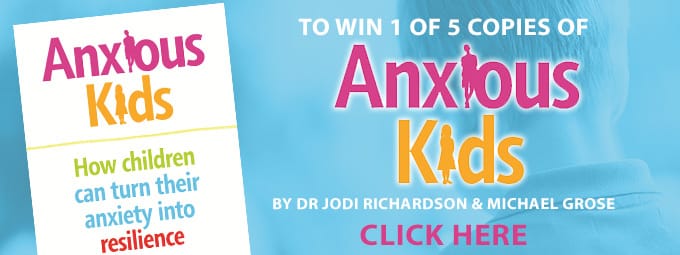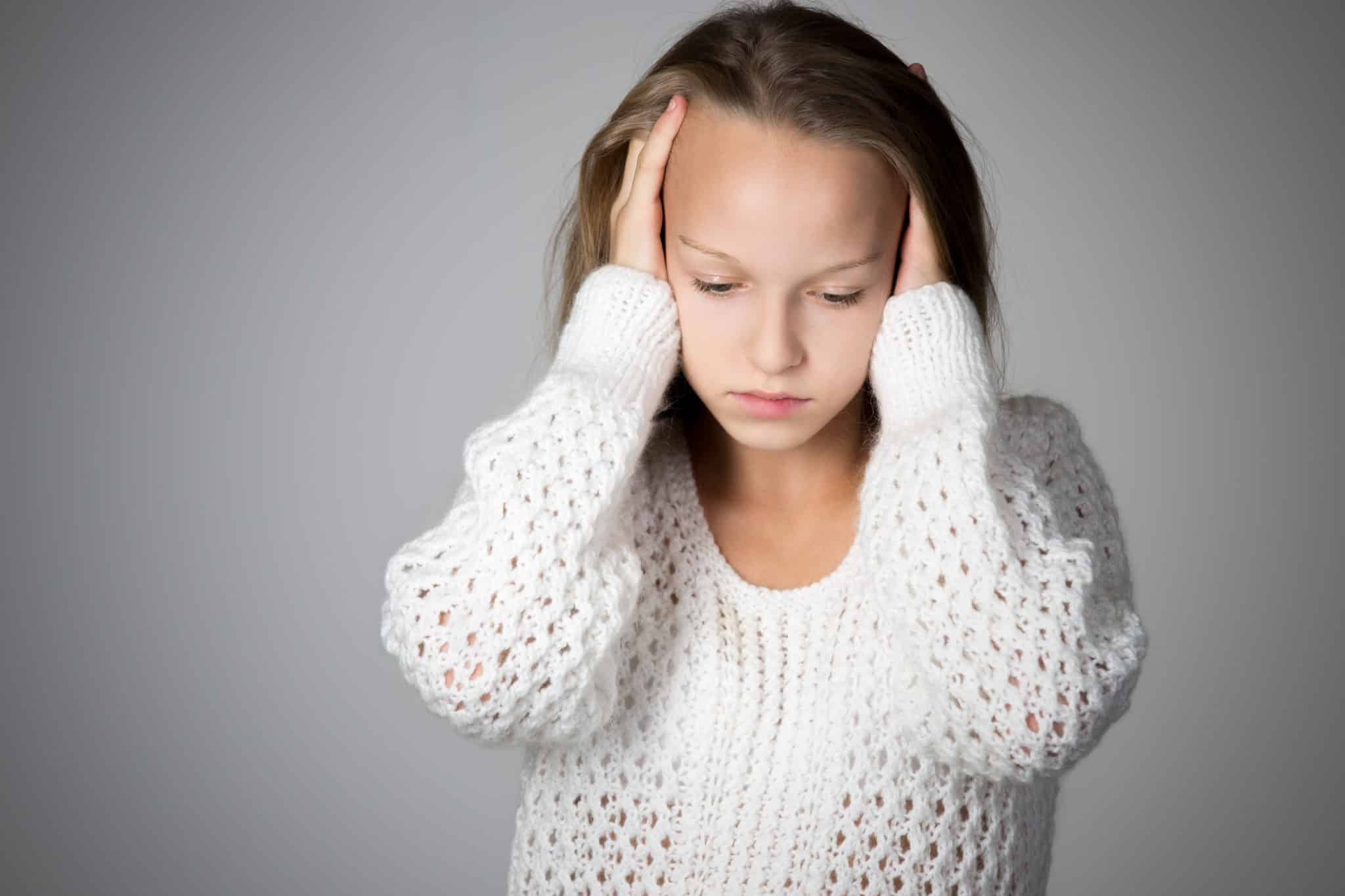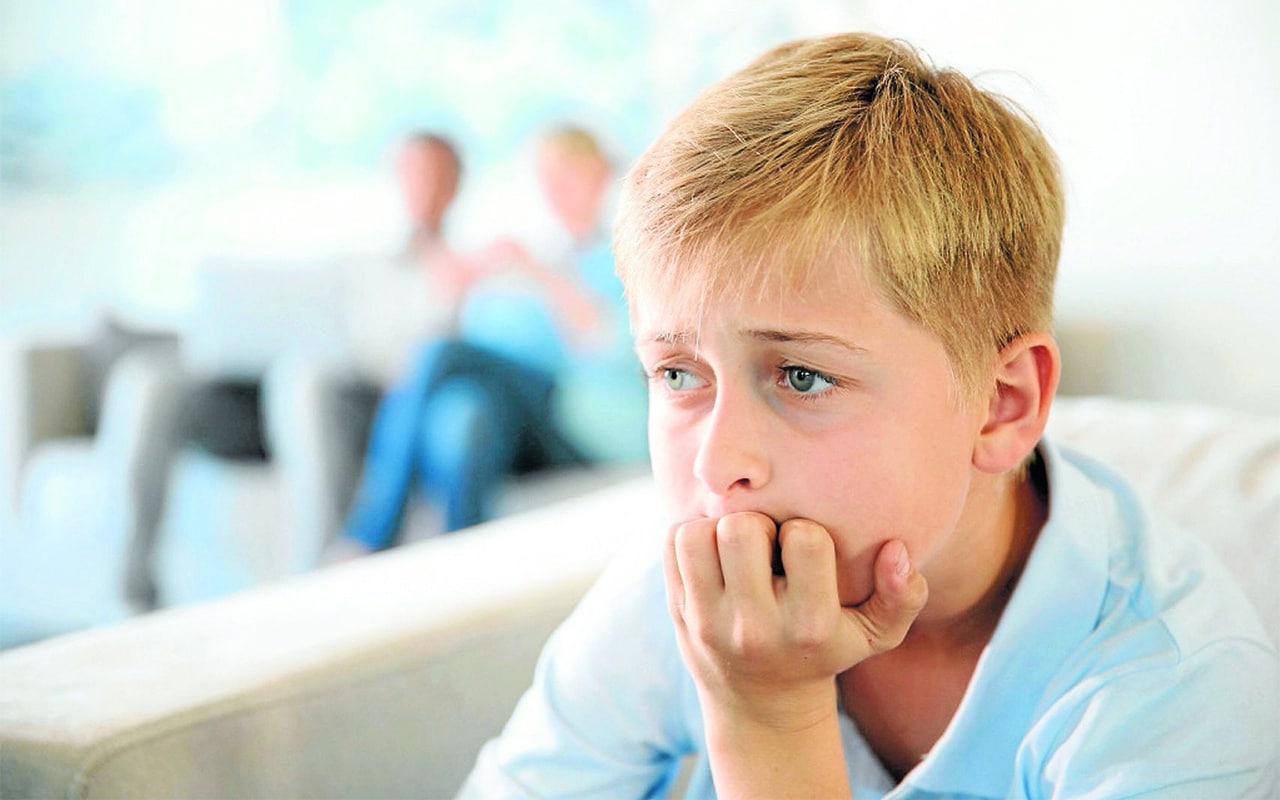To win 1 of 5 copies of Anxious Kids by Michael Grose and Dr Jodi Richardson send your name, email and postal address to [email protected] Good Luck!
Anxiety levels are high for everyone at the moment. For us as adults and as parents it’s a time of unprecedented uncertainty where the ripple effect of the impact of COVID-19 on closures, product availability, travel bans, income, loved ones, connection, work, businesses, politics, healthcare and mental health (to name a few) will affect all of us in some way for the foreseeable future.
Anxiety is our brain and body’s reaction to anticipated threat so it’s natural for it to be affecting each and every one of us in some way at the moment.
What we as adults have at our disposal, and what our kids lack, is the ability to maintain perspective on the news. We can seek out trusted information to help us understand the facts so we’re less affected by inflammatory media.
Our kids are hearing us talk about it, they’re seeing spare rooms filled with toilet rolls, they’re watching class numbers diminish or are staying home from school.
They’re seeing snippets of the news or even regular news updates and they’re talking about it with their friends in class. One primary school reported a new game where kids had to play dead if they got tagged in a game called Coronavirus.

For children who do go looking for answers, they’re likely to stumble across media that could amplify their anxiety rather than help to settle it down.
Our kids are in the midst of an anxiety epidemic. It’s estimated 500,000 Australian children suffer from an anxiety disorder with that number expected to soar post COVID-19.
Symptoms of anxiety can start as early as four years old, something renowned researcher and educator Dr Jodi Richardson knows all too well.
The author of Anxious Kids began suffering from anxiety when she started school and still battles with it today, but now has the tools to manage it.
“Having not only studied anxiety but suffered from it from such a young age I know first-hand how devastating it can be,” she said.
“It didn’t take me long to realise that I was extremely anxious about going to school, each morning I’d wake up with a sick tummy and just didn’t want go.
“Nobody understood what I was going through, I looked fine on the outside but the inside was a different story and they just kept sending me, not knowing what to do about it.”
“Nobody understood what I was going through, I looked fine on the outside but the inside was a different story and they just kept sending me, not knowing what to do about it.
“I have suffered from anxiety, including major depression, pretty much my whole life, stemming from when I was four and think things could have been different had it been managed when it started.
“It’s all about coming up with strategies to manage it.
“It’s estimated around 500,000 Australian children currently suffer from anxiety and I expect that number to increase significantly following the devastating COVID-19 pandemic.”
Dr Richardson said there is a lot we can do as parents and teachers to help our kids through anxiety:
Manage your own anxiety
Understand that anxiety can be contagious. Our kids are looking to us and how we are responding, we need to be mindful of what we say and do in front of them. If you’re struggling with your own anxiety and mental health right now, maintain your usual coping strategies and add in more. Write yourself out a list of ideas to help you to manage your mental health. Connect with the people that can support you. Avoid panicking when your kids are around but please make sure you’re being supported to cope.
Start with what your child already knows

Start where your kids are at when it comes to discussing the virus. If they’re under 6 and know nothing of the virus, leave it that way for now. Of course, if they have questions answer honestly but don’t give them more than they’re asking for. For kids that do know about the virus some will have heard tales of death and panic while others might be curious to know why their favourite flavour of baked beans isn’t in the pantry. Find out what they know and give honest responses that are age appropriate. Above all, don’t be afraid to talk about it, they’ll worry more when their ‘what if’s’ are left unanswered.
Validate how they feel
When we’re anxious or fearful there’s nothing worse than when someone says ‘don’t worry’ or ‘no need to be upset’. What we all need, and especially our kids, is for someone to say ‘I get it’, ‘I understand this is hard for you right now’ or ‘I’ve felt like that too, not much fun eh?’ Empathy is so important for us to share with each other right now but especially our anxious kids. What naturally follows after empathy is compassion, a warm and nurturing response to the suffering our children are experiencing. We know this helps our kids to cope much better when facing challenges, it shows them we see them, we hear them and we’re here for them.
Help your children to remain present
Anxiety builds when we’re future focussed and worrying about all of the ‘what if’s’. By helping our kids remain focussed in the present we’re bringing their minds back to a place of calm amidst the storm. Playing games, doing crosswords, dancing to music, learning something new, solving puzzles, being creative. All of these bring future focussed worried minds back to the here and now.
Progressive Relaxation
When we’re anxious our bodies tense up. It’s because our muscles are primed and ready for us to fight or flee imminent danger. Yet, because the danger is psychological, we don’t move, the tension builds and awful anxious feelings hang around much longer than they would if we use relaxation strategies. Progressive relaxation is a series of movements we can take our children through. I often teach progressive relaxation from the toes to the nose. You can start by asking your child(ren) to lie down on the floor, eyes closed and ears open! Ask them to start by curling their toes to tighten the muscles and joints, next they let their toes relax and notice how different that part of the body feels. The pre-tension amplifies the relaxation that follows. Continue with tension and relaxation slowly up the body and get creative. By the time you ask them to shrug their shoulders you might get them to picture being a turtle pulling its head back into its shell.
Mindfulness
When we put our attention in the present moment it will readily drift back to other things we have on our mind. The objective of mindfulness is not to empty your mind or to expect to remain present every single moment, it’s about purposefully paying attention to the present moment, noticing when your mind has wandered, thanking your mind for doing what minds do, and then returning your attention back to the mindfulness exercise. This will happen again and again and again. Over time and with practice, wandering thoughts become less sticky and our minds wander less to begin with. It’s a skill that can bring our children a sense of calm, relaxation, contentment and equanimity. Since mindfulness is about paying attention on purpose the ways you can introduce it are endless. You might start by asking your child(ren) to lie down and close their eyes, paying attention to all they can hear for a minute or two. Start with short mindfulness exercises and increase the length of the exercises over time.

Breathing
The part of the brain that sounds the alarm when danger is detected is called the amygdala. One of the tangible ways we can show our brain we’re safe is through deliberate breathing using our diaphragm. Breathing is a powerful antidote to anxiety, helping us to shift control of our physiology from the predominant ‘fight or flight’ branch of the nervous system to the ‘rest and digest’ branch that enables us to think more clearly and feel more calm and centred.
With children heading back to the classroom Dr Richardson has these suggestions how parents and teachers can make it a smooth transition:
o Maintain open conversations to talk about any fears or worries your child has about returning to school
o Validate any concerns so children feel heard and understood
o Ask children what they think will help them transition back to school
o Connect with friends as much as possible so those relationships are still strong when school returns
o In the lead up to returning to school help children get back into the routine of a regular school week
o Keep the first week or two reasonably quiet as kids will be tired after getting back into school routines
o Celebrate returning to school at home or in the classroom
o Practice gratitude to reflect on all of the positives that come from getting back to school
o Maintain open communication at home so that concerns and worries can be freely talked about as a family
Bestselling author Michael Grose [Why First-Borns Rule the World] and leading researcher and educator Dr Jodi Richardson have the answers. Anxious Kids is the ultimate handbook for coping with your child’s anxiety. Anxious Kids will give you strategies and techniques to help your child manage anxiety, and thrive.
Dr Jodi Richardson is an expert on anxiety having lived it and studied it. She has spent more than 25 years in the field of health, wellbeing, clinical practice, elite sport and education.
Michael Grose is one of Australia’s leading parenting and educational writers and speakers. He is the author of nine books for parents, including the best-selling Why First-Borns Rule the World, which has sold more than 23,000 copies.
